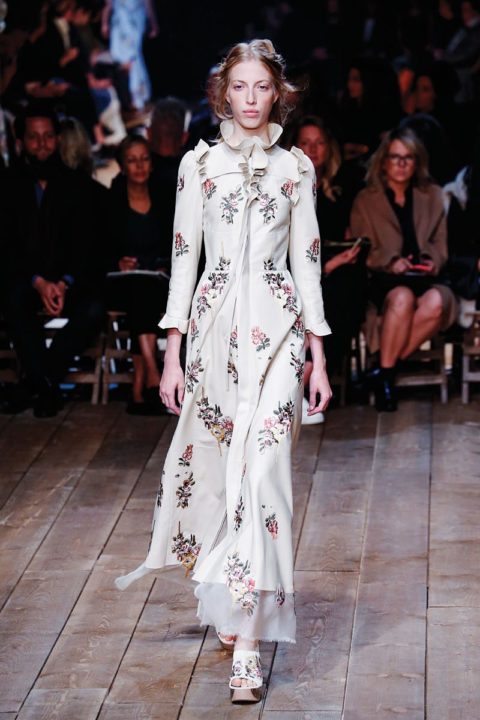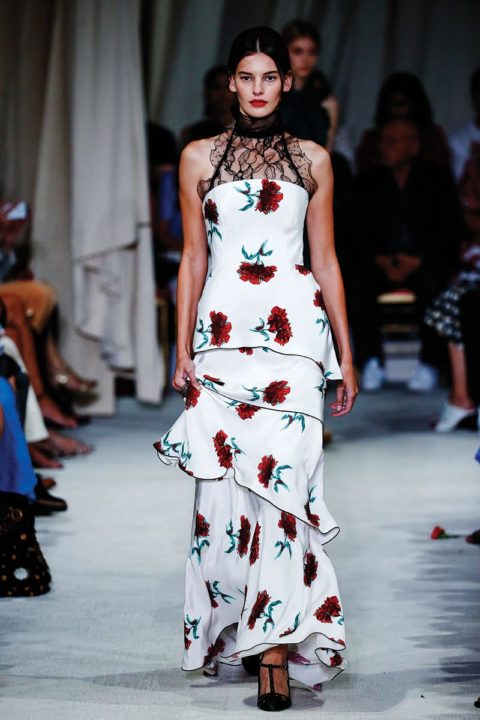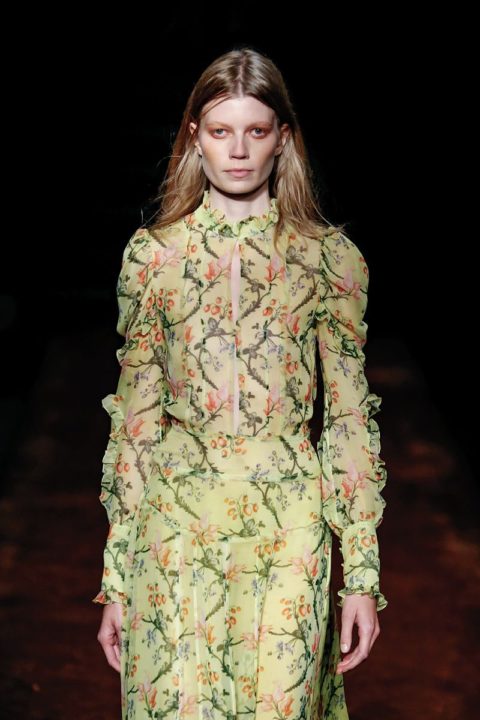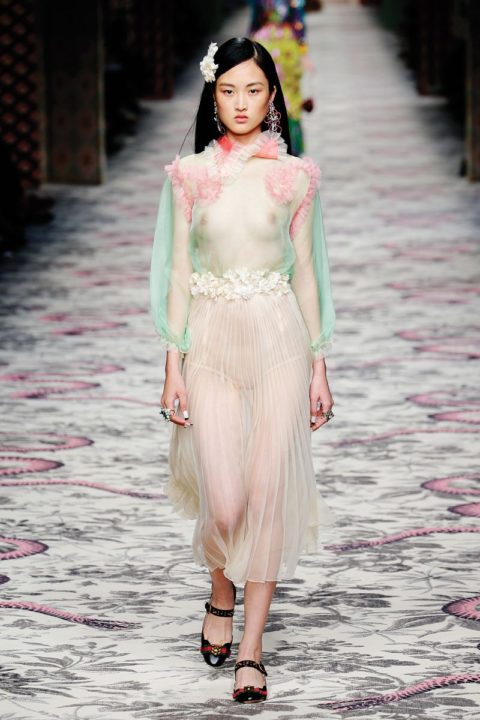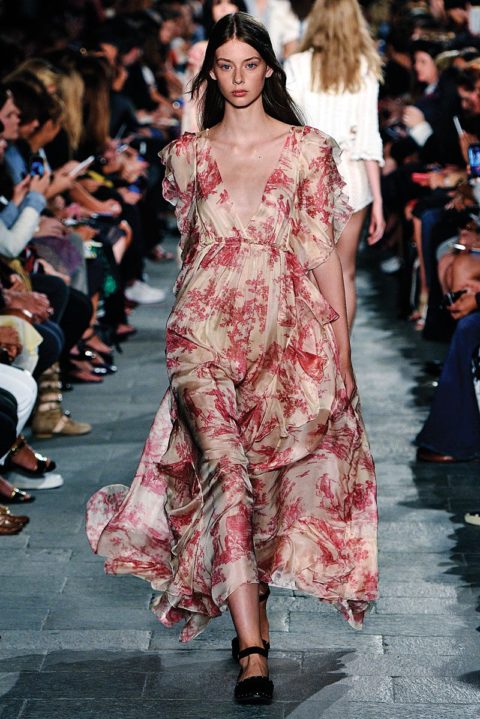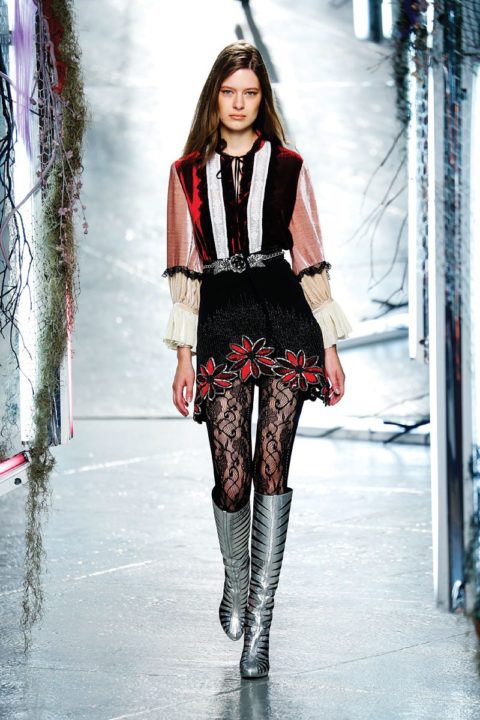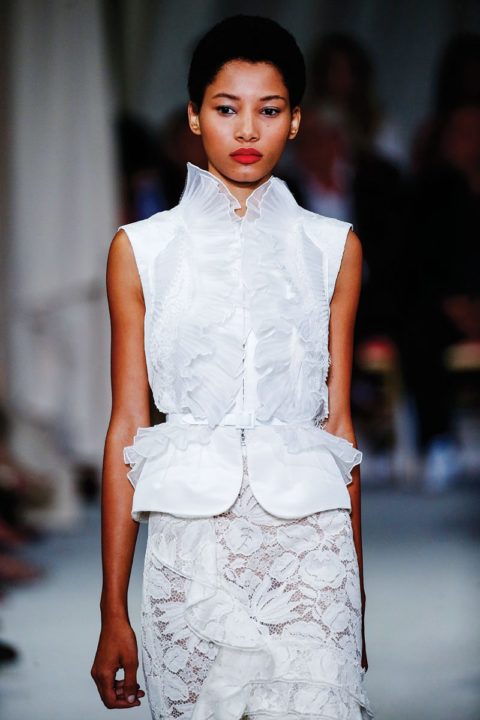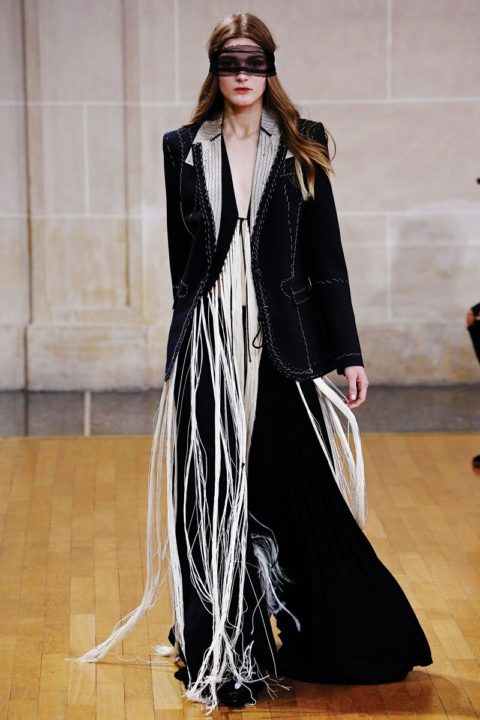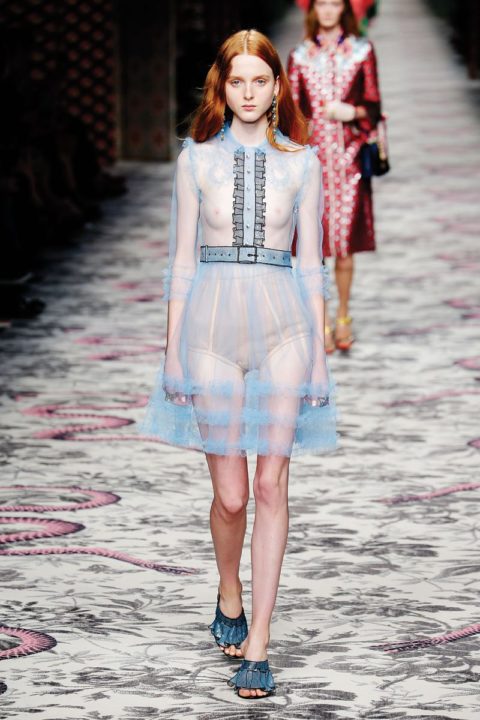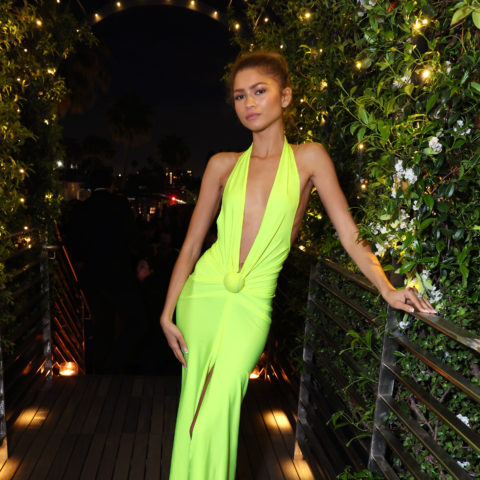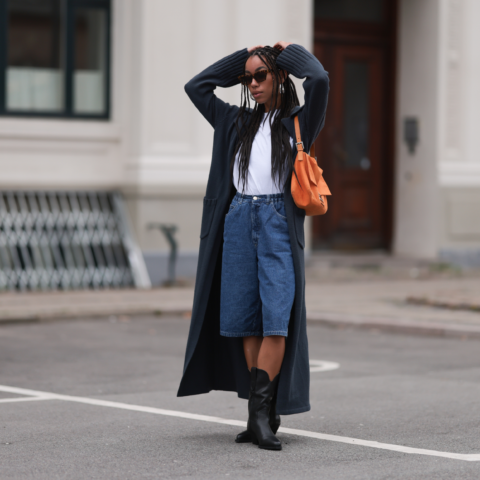From ruffles to voluminous sleeves, why we’re obsessed with the feminine trend this season

Romanticism is a catch-all term applied to so many different ideas you almost start to question what it actually means. As in, when you hear the word “romantic,” do you think of a feeling, an artistic movement, an aesthetic, an attitude? All qualify, yet most people wouldn’t immediately associate the sweeping landscape paintings from 19th-century Germany with the swooning love songs of Ella Fitzgerald. Somehow, though, fashion has settled on its own idea of romanticism, which seems to have reached a crescendo this spring, longingly leaving its mark on such diverse collections as Philosophy di Lorenzo Serafini, Proenza Schouler, Erdem, Gucci, Rodarte and Oscar de la Renta. Who would have guessed a widespread preoccupation with Victorian details—varying amounts of ruffles, lace, broderie anglaise, eyelets and filmy organza—could produce such modern feminine mystique? Granted Junya Watanabe, Rei Kawakubo and Alexander McQueen began tapping into a darker shade of romance many moons ago without caring whether it had legs as a trend. In their imaginations, ruffled hems, frilled collars and period references played into a certain conceptual approach of projecting inner thoughts as an outward, unhinged expression.
The difference today: wearability. For every one of Erdem’s ruffled yokes and lantern sleeves, there were intentionally exposed shoulders or sleek side-waist cut-outs. Rodarte’s lace dresses dripped with surface detail but were short and swingy enough to chase down a toddler. Veronique Branquinho’s floor-grazing tasselled dresses topped with tailored, overstitched blazers seemed intended for an adult fairy tale starring an art dealer. The standout look from Lorenzo Serafini’s collection paired a cropped eyelet blouse trimmed in frills with low-slung, Y-strapped overalls—all in white. It felt as if he’d overlaid throwback Victoriana with Backstreet Boys on the type of ingenue photographed by David Hamilton (whose work the designer cited as a reference). “They all represent immortal elements of a female wardrobe,” says Serafini of the bygone stylistic details that have become a veritable signature since he presented his first collection for Philosophy last year. “But, of course, today the proportions are completely updated so that they correspond with the needs of real life.”
A self-described “incurable romantic,” the designer’s vision has been met with an overwhelmingly positive response from editors and buyers alike, which he attributes, in part, to the fact that this aesthetic is both “easily understood” and true to himself. “We are more attracted to fashion that has a previous story, a previous life,” says Serafini. “It’s assuring now.” Tapping into fashion’s collective memory as opposed to proposing something radical need not feel steeped in nostalgia. Consider the comment made by Rodarte’s Kate Mulleavy to Vogue following the label’s runway show last September: “Sometimes I feel like it’s futuristic to go into the past.” Designer Sharon Wauchob explains she was only tempted to explore a distinctly feminine message upon realizing that she had resisted it for so long. So without abandoning her impeccably tailored trousers, she has gradually become one of the industry’s experts in lace, with her spring collection showcasing her most romantic offering to date. “The mood changer is about being relaxed, which I think is so important—relaxed and romantic, hand-in-hand,” says Wauchob. “It’s not a big ballgown; it’s an intimate conversation with a woman.” It’s worth noting the romantic references that resonate most stand apart from dreamy, frothy princess fare. While the fabrics might be delicate and the silhouettes appear dramatic, the strongest statements are far from precious.
For Veronique Branquinho, “twisted romance” and a sense of mystery has long been at the heart of her creative process. Ironically, the Belgian designer arrived at her “foregone heroines” as a reaction to the heroin chic trend of the mid-’90s, which was all the rage when she graduated from the Royal Academy of Fine Arts, in Antwerp. Her goal is that the designs reflect real-life concerns, within the wardrobe and beyond. “The idea is of active women in control of their lives; they’re active and mobile,” she says. “Fashion has always been a sign of the times, and the world is quite tough at the moment. We’re overwhelmed with negative news.”
With these three designers as a gauge, it’s fair to suggest that our collective feeling of unease has heightened—rather than defined—this neo-romantic movement. In other words, it’s not a fleeting love affair, but rather something that will carry on and evolve through collections going forward. “Maybe it’s escapism,” says Serafini. “It’s absurd to generalize life with fashion—and I can’t say a dress can save the world. But at least it can be a little effort to see things differently.”

